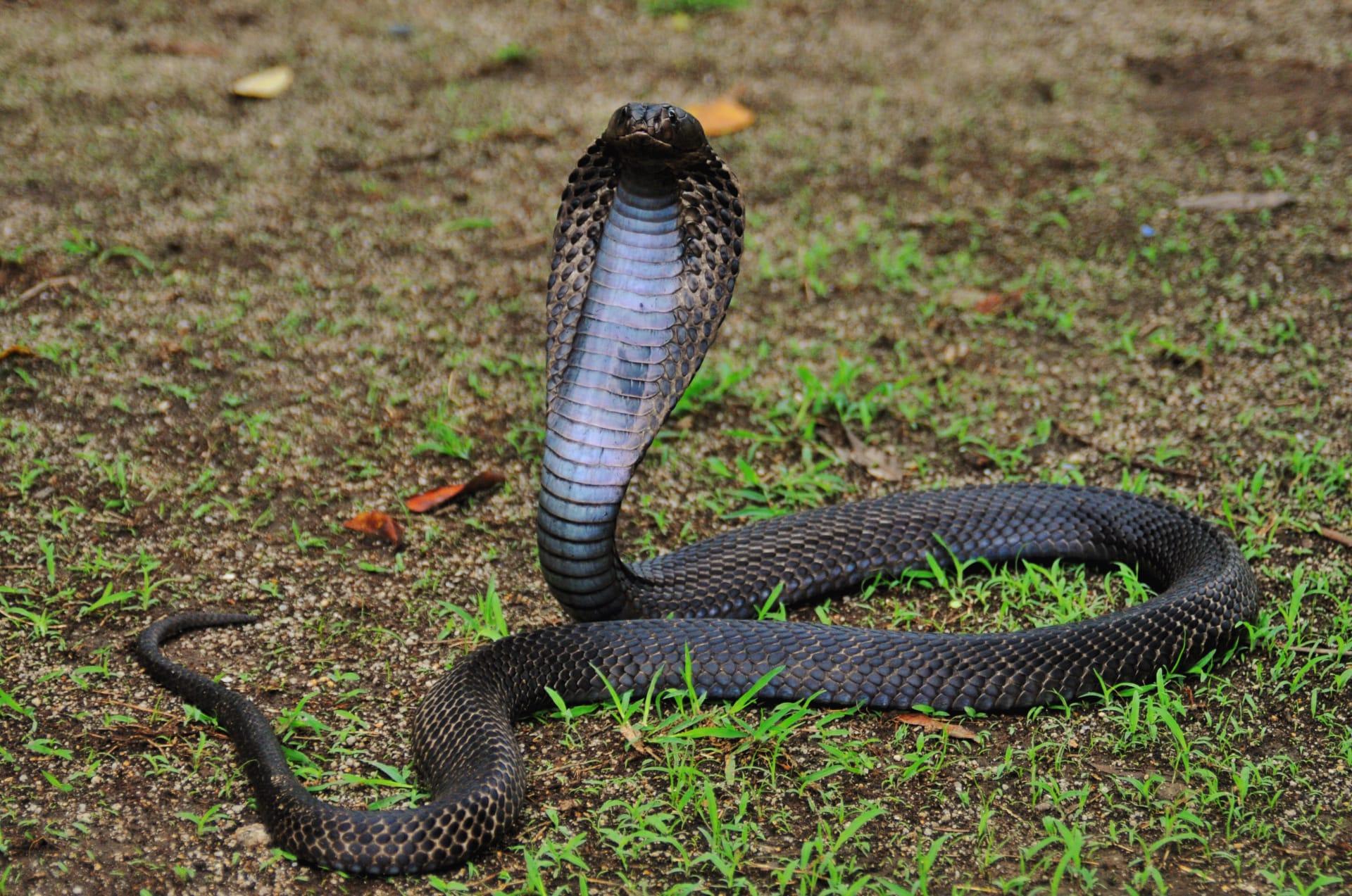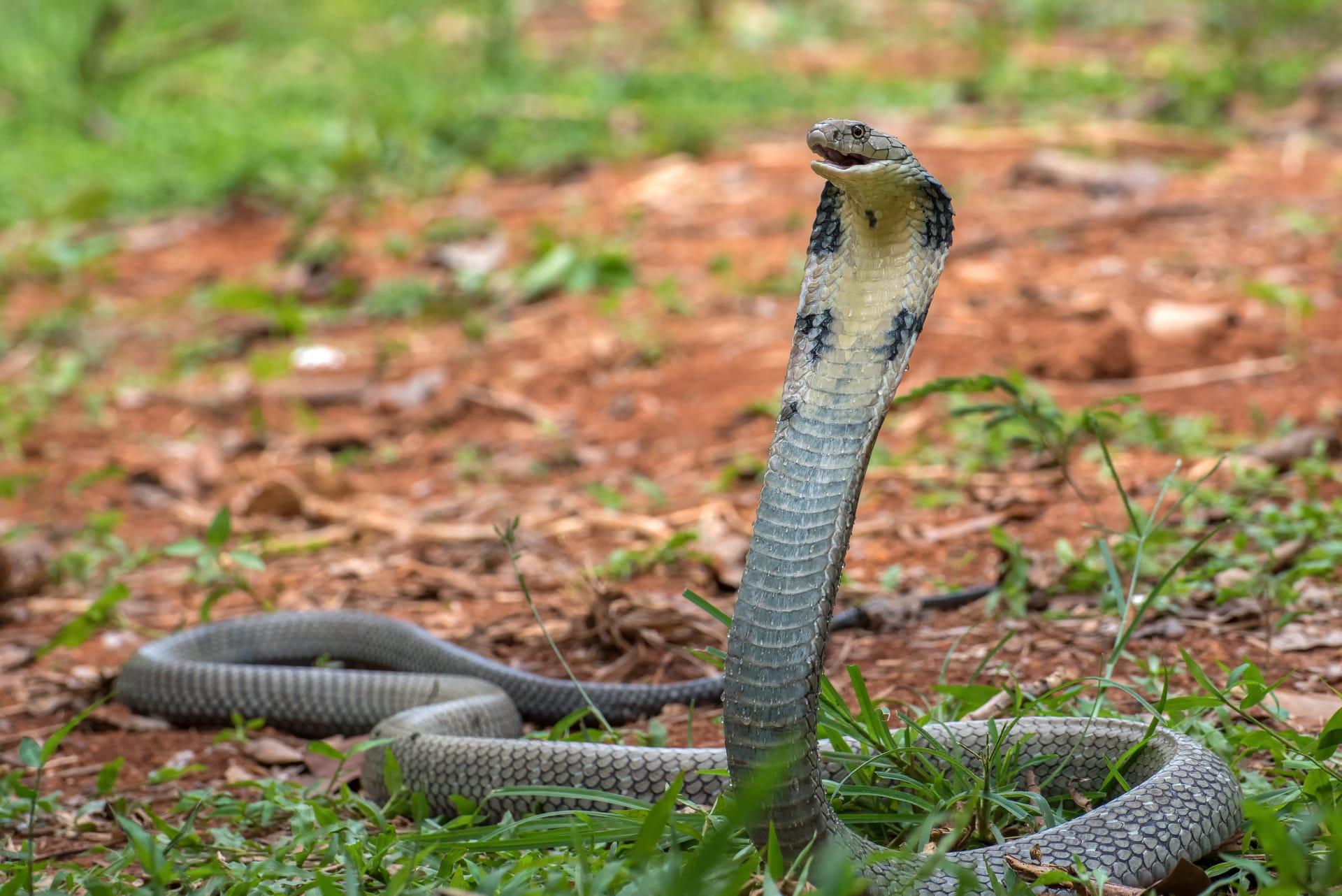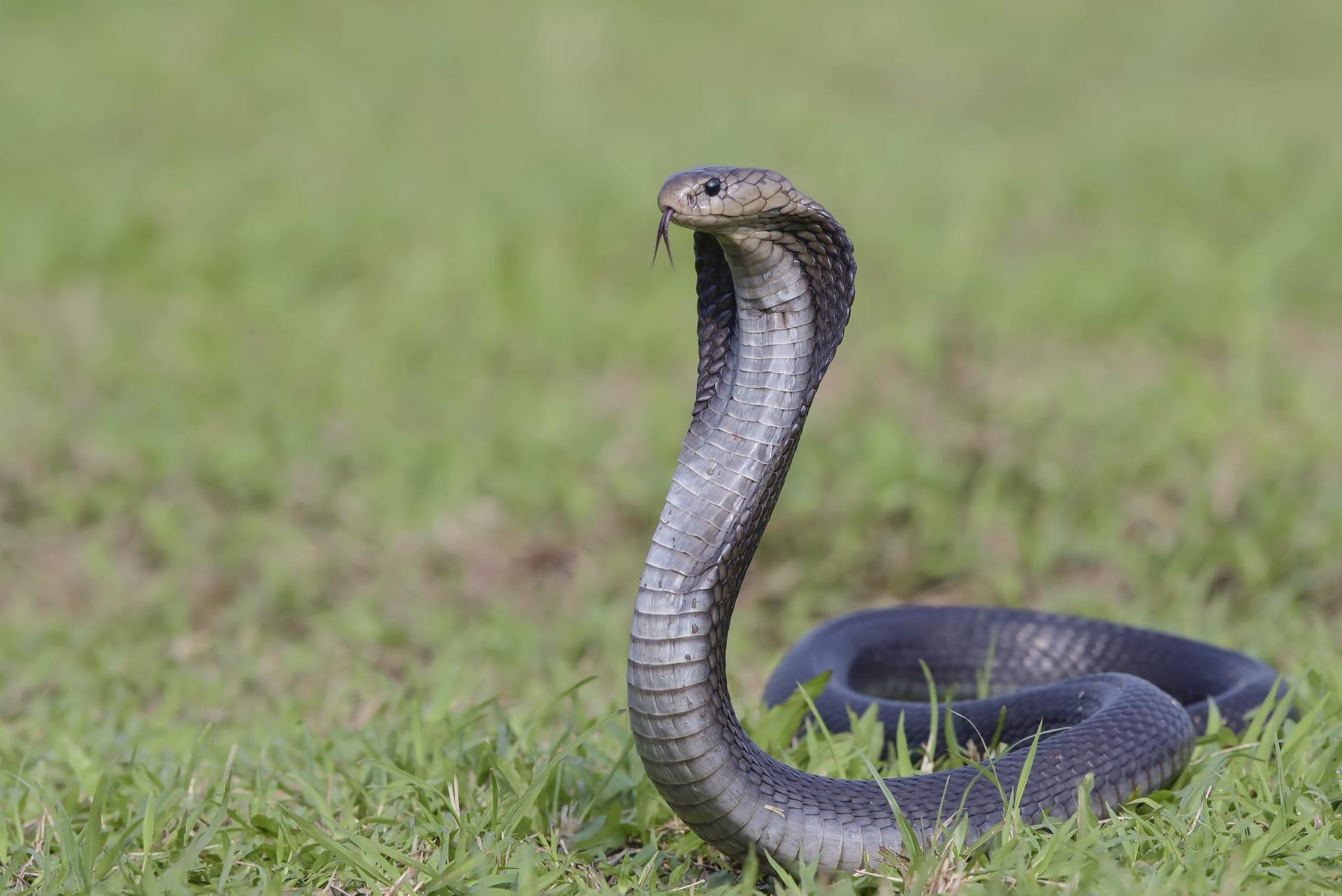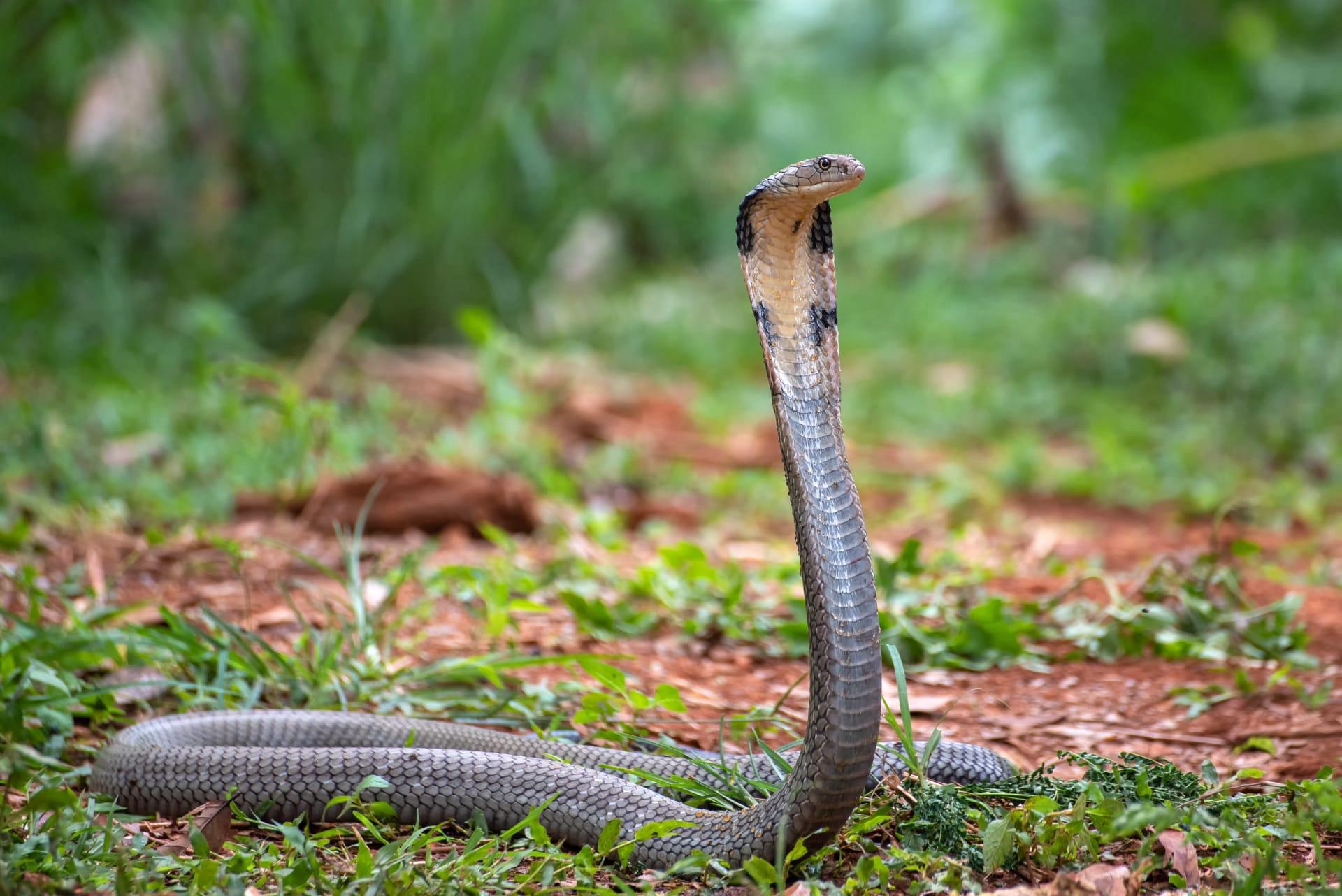King Cobra
- Home /
- Mini Encyclopedia /
- Animal /
- King Cobra
1
The King Cobra, scientifically named Ophiophagus hannah, is a marvel in the snake world. Belonging to the family Elapidae, it's distinct from typical cobras in the genus Naja. It's the world's longest venomous snake, reaching up to 18 feet (5.5 meters) in length. With a fierce reputation, this species is revered and feared for its potent venom and imposing size.
King Cobras are predominantly found in forests across Southeast Asia, including India, China, Indonesia, the Philippines, and Malaysia. They thrive in diverse habitats ranging from dense highland forests to mangrove swamps. This adaptability allows them to be widespread in the region, although habitat loss poses a significant threat to their population.

2
Question: Do King Cobras always stand and spread their hoods when confronted?
Answer: Contrary to popular belief, King Cobras don't always stand up and spread their hoods. This behavior is a defensive posture, typically adopted when they feel threatened. In their natural habitat, King Cobras prefer to avoid confrontation, often fleeing unless cornered or provoked. Their standing display, accompanied by a hiss, is a warning sign, not a habitual aggressive stance.

3
King Cobras have a unique survival strategy. They are primarily hunters and are specialized in preying on other snakes, even venomous ones. Their diet mainly consists of snakes, but they can also consume lizards, eggs, and small mammals. To catch their prey, they use their speed, agility, and highly potent venom, which can kill a snake almost instantly and a human in a few hours without treatment.
Reproduction in King Cobras is another aspect of their survival strategy. They are the only snakes that build nests for their eggs. The female meticulously constructs a mound of leaves and debris, where she lays 20 to 40 eggs. She guards the nest fiercely until the eggs hatch, displaying unique parental care rarely seen among snakes.

4
In the ecosystem, King Cobras play a crucial role as apex predators. By feeding on other snakes, including venomous species, they help control the snake population. This balance is vital for the ecosystem, as an overpopulation of certain snake species could disrupt the food chain and biodiversity.
Their role extends beyond just population control. King Cobras are an indicator species, meaning their presence and health reflect the condition of their ecosystem. A thriving population indicates a healthy forest environment. However, their numbers are declining due to habitat destruction and poaching, signaling ecological imbalance.

5
Film: "Kingdom of the Cobra" is a fascinating documentary from the United States, released in 2008. It delves into the life of the King Cobra, exploring its behavior, hunting strategies, and the unique way it raises its young. The documentary provides stunning visuals and insights into the secretive world of these majestic serpents.
Book: "The King Cobra: Natural History and Captive Management" by Mark O'Shea, published in the United Kingdom in 2018, is a comprehensive guide. It covers the biology, behavior, and conservation of King Cobras, along with tips for their care in captivity. O'Shea's expertise brings a detailed and engaging perspective to the species.
Book: "Venom: The Secret Life of King Cobra" by Ted Levin, published in the United States in 2013, offers a blend of science and storytelling. This book provides an in-depth look into the natural history of King Cobras, their interaction with humans, and the efforts to conserve them. Levin's narrative captures the essence and mystique of these enigmatic creatures.